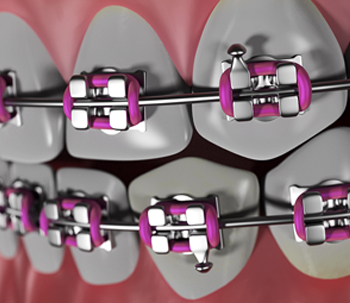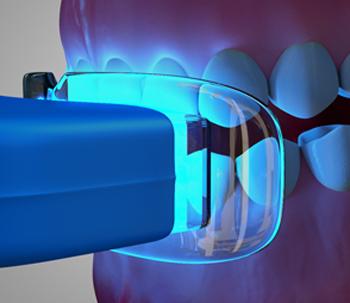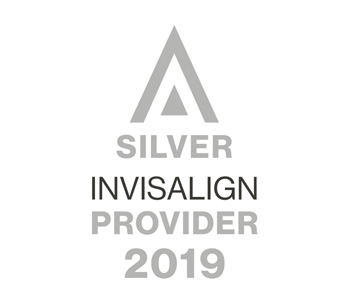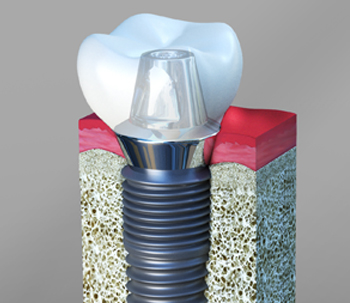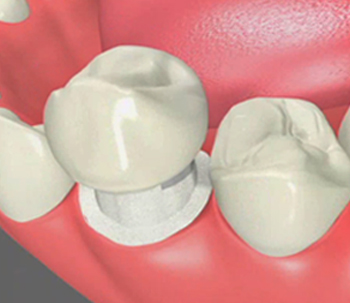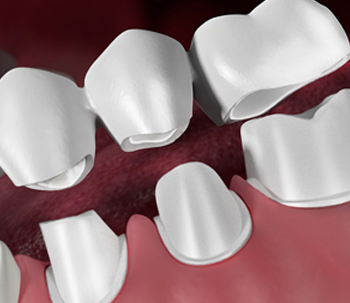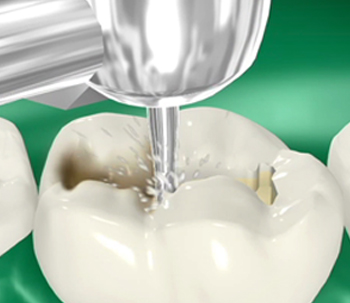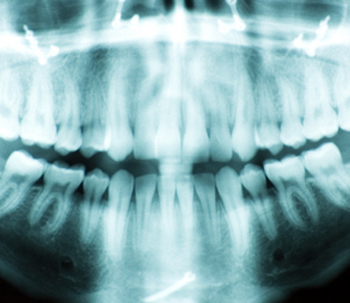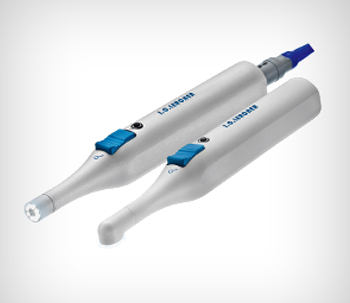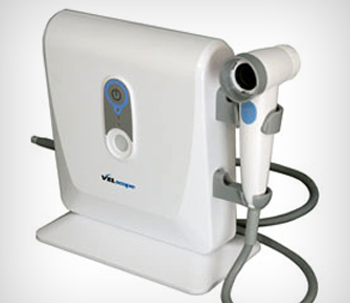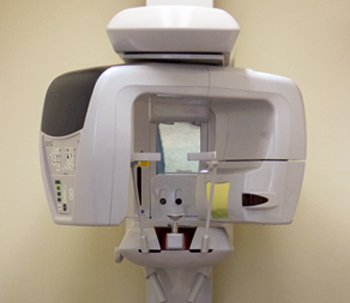Orthodontist in LOS ANGELES
AND VAN NUYS
Orthodontics is a type of dental specialty which aims to prevent, diagnose, and treat dental irregularities such as malocclusions. The results of Orthodontic Treatment can be dramatic with beautiful smiles, improved dental health, and enhanced quality of life for people of all ages. The benefit of an orthodontic treatment includes a fresh and healthy mouth, pleasing appearance, and long-lasting tooth.
Our Orthodontist Dr. Kim provides orthodontic treatment following the guidelines established by the American Association of Orthodontist (AAO). Their main areas of focus include the mouth, jaw, teeth, gums, and nerves.
What Does an Orthodontist Do?
An orthodontist is a dental specialist in correcting misalignments of teeth and jaw. There are many problems associated with misalignment for example speech defects, difficulties in chewing, and maintaining adequate oral hygiene. Common problems which our Orthodontist can successfully treat are:
- Anteroposterior Deviations: Common examples of anteroposterior deviations are underbite and overbite.
- Underbite: In this, the lower teeth are positioned further forward than upper teeth.
- Overbite: In this, the upper teeth are positioned further forward than the lower teeth.
- Overcrowding: This overcrowding problem occurs due to the lack of jawbone space making it difficult to erupt in alignment with existing teeth. Our Orthodontist can realign the teeth using several unobtrusive devices and treatments.
- Aesthetic Issues: In these issues, the shape of the whole face is negatively impacted by a bad bite or malocclusions. An orthodontist can restructure and realign the jaw, lips, and teeth to create a beautiful smile.
How does Orthodontic treatment work?
Orthodontic treatment works with two types of appliance i.e., fixed and removable. These are used to help move your teeth and affect the growth of jaws. These appliances work by applying gentle pressure on the teeth and jaws.
Fixed Orthodontic Appliances: Fixed orthodontic appliances are devices that are attached to the front part of the teeth and cannot be removed by the patients. These are capable of causing teeth movement. The different fixed appliances includes:
- Braces: The very well-known fixed appliance is braces, it consist of bands, wire stripes or brackets. These fixed appliances bands are fixed around the teeth and used as anchors for the appliances. Tightening the arch wire strip puts extra pressure on the teeth to help them to settle in a proper position. Braces are most commonly adjusted every month to bring desired results, which may be achieved within the months or a few years. Our Orthodontist Dr. Kim provides the best solution for your braces treatment.
- Special Fixed Appliances: These appliances are used to control thumb-sucking as they are attached to the teeth by bands. These are uncomfortable during meals and should be used as a last resort.
- Fixed Space Maintainers: If a baby or a kid tooth is lost prematurely, a space maintainer is used to keep the space open until the permanent tooth erupts. Next to the empty space of the tooth, a band is attached and a wire is extended on the other side of the space.
Removable Orthodontic Appliances: Removable appliances are devices that are not fixed to the teeth and can be removed by the patients. The different removable appliances includes:
- Removable Space Maintainers: Removable spaces also work similarly to that of the fixed space maintainers. The base is usually made with acrylic which fits over the jaw and the plastic branches are placed between the specific teeth to keep the space open between them.
- Aligners: Aligners (Invisalign) are virtually invisible and can be removed for eating, brushing, and flossing. These are used in an increasing number of ways to move teeth in the same way that fixed appliances work. Our Orthotontist Dr. Kim provides Invisalign Treatment.
- Removable Retainers: Worn on the roof of the mouth removable retainers are used to shift the teeth to their initial position. They are also used to prevent thumb sucking.
- Lip and Cheek Bumpers: These appliances are designed to keep the lips and cheeks away from the teeth.
- Palatal Expander: It’s a device that is used to widen the arch of the upper jaw. It comes in a plastic plate that fits over the roof of the mouth. When an outward pressure is applied to the plate forces the joints in the bones of the palate to open lengthwise, widening the palatal area.
- Headgear: It’s a device in which a strap is placed around the back of the head and attached to a metal wire in front, or face bow. Headgear slows down the growth of the upper jaw and holds the back teeth, while the front teeth are pulled back.
I’m a Candidate for Orthodontic Treatment:
You may be a good candidate for Orthodontic Treatment if you have the following bite problems:
- Crossbite: When one or more of your top teeth don’t line up properly with your bottom teeth making chewing difficult.
- Open Bite: This problem occur when the top and bottom front teeth don’t meet as they should and making chewing less efficient.
- Overbite: Your top front teeth cover too much of your bottom front teeth.
- Underbite: When your top teeth sit behind your bottom teeth rather than in front of them.
- Overjet: Your top front teeth stick out. This commonly results from thumb sucking as a child.
At Mac Dental Group , our Orthodontist Dr. Kim offer Orthodontic Treatment. Call our dental office today at (323) 664-3400 and schedule your appointment.
Teeth Whitening
Have you ever dreamed of a white, attention-grabbing, perfect smile? You’re not the one, as most of the people feel that when it comes to teeth “brighter is better”. Everyone wants a smile that dazzles and turns heads wherever they go. But how can you obtain that glow? We recommend you to skip the OTC products and choose a professional Teeth Whitening.
Our Dr serves Los Angeles, Van Nuys and the surrounding area, providing teeth whitening and other cosmetic dental services. Dr. is a conservative, holistic dentist, and recommends the least aggressive procedure to achieve oral health and cosmetic goals.
What are Teeth Whitening?
Teeth Whitening is a cosmetic dental procedure that is used to lighten teeth and helps to remove stains and discoloration. It’s the most popular cosmetic dental procedure because it can greatly improve the look of your teeth and smile. A teeth whitening is not a one-time procedure, it needs to be repeated from time to time to maintain a brighter color.
Before jumping into the details of Teeth Whitening let us first know the enemy of teeth whitening – Tooth Stains.
What are Tooth Stains?
Tooth Stain occurs on the surface and below the tooth enamel. As each of the teeth consist of two-layer i.e. inner dentin layer and hard outer enamel layer. When you consume stuff like food, coffee, tea, etc, the outer enamel layer protects the teeth with the help of foreign materials that form a pellicle film over the enamel layer. Tooth Stain is the enemy of Teeth Whitening.
Causes of Tooth Stains:
Tooth Stains have many causes that can be prevented. The below list can help you determine the cause of tooth stains:
- Food & Drink: Few fruits, vegetables, and dark color liquids like coffee, tea, and red wine can cause discolored teeth.
- Tobacco: Some habits like smoking and chewing tobacco can cause discolored teeth.
- Oral Care: Poor oral hygiene can lead to tooth discoloration.
- Medical Treatment: Some medical treatments like high blood pressure and antihistamines can cause your teeth to stain.
Types of Tooth Stains:
The three main tooth stains are:
- Extrinsic Teeth Stains: This stain occurs on the surface of the tooth due to the pigmented that resides from the foods and drinks that cover the tooth enamel. Typically extrinsic tooth stain is caused by tobacco use or drinking tea, coffee, wine, and cola drinks.
- Intrinsic Teeth Stains: It occurs below the surface of the tooth and accumulates within the tooth enamel. Excessive use of fluoride in childhood can also result in Intrinsic Teeth Stain. Intrinsic teeth stain is difficult to remove but it can be done with our professional teeth whitening team.
- Age-Related Teeth Stains: This type of stain combines the result of both intrinsic and extrinsic teeth stain. Because the core tissue of your teeth that is known as the dentin naturally yellows over time and discolor with age.
Teeth Whitening Methods:
Mac Dental Teeth Whitening is the most popular cosmetic dental treatment in the area. Not only that Teeth Whitening is effective, but it can also change your smile and improve your self-esteem. Our Mac Dental Cosmetic Dentist offers two different teeth whitening options:
- In-Office Teeth Whitening
- At-Home Teeth Whitening
In-Office Teeth Whitening in Mac Dental:
Our Cosmetic Dentist Perform In-Office Teeth Whitening in Mac Dental. Before starting the procedure our dentist will probably photograph your teeth to monitor and examine the process of the treatment. Next, a dental hygienist will clean your teeth by removing bacteria, foods and other substances that build on your teeth. Once this is completed the whitening procedure begins.
At the beginning of the Teeth Whitening procedure, a protective coating is placed for the safety of gums and lips around the teeth. A teeth whitening gel is applied on the teeth and an Ultraviolet lamp is shined on to the teeth to activate the ingredients present in the gel. The use of a UV lamp speeds up the whitening process. These procedures usually take 30 to 90 minutes and require 1 to 3 appointments based on how severe your stains are and how white you want your teeth to be.
Is Bleaching Your Teeth Safe?
Bleaching your teeth is safe when performed with our dental professional at Mac Dental. You will be confident that your gums will be protected during the procedure so that, only the teeth will be in contact with the bleaching agent.
At-Home Teeth Whitening:
At-Home teeth whitening are the most popular cosmetic method and dramatically whiten the teeth. This type of teeth whitening method requires two office visits. During the first office visit, Dr. Kim will take an impression of your teeth to design a clear plastic tray that is custom-designed to fit. In your second visit, our dentist will give you a clear plastic tray to try and ensure a proper fit.
How Long Does It Take to Whiten Teeth?
When it comes to teeth whitening, it is important to understand that the amount of whitening depends on the number of stains on the teeth. Our professional In-office Teeth Whitening treatment typically takes three to four weeks. Over the counter, In-Home Teeth Whitening treatment tends to take at least a month of wearing mouthpieces every night before they start to affect.
Reasons for Teeth Whitening:
A teeth whitening is an effective way of lighting the natural shade of your teeth. It can’t completely change the color of your teeth, but it can lighten the current shade of your teeth – making your smile brighter. The reasons to get teeth whitening are:
- Boost Self-Confidence: Your smile plays an important role in your confidence. Mac Dental Teeth Whitening can boost your smile and increase your self-confidence.
- Special Occasion: Teeth whitening are a great way to ensure that your smile looks bright and healthy for an upcoming special occasion and can help you look your best.
- Long-Lasting Results: One important reason for teeth whitening is the long-lasting results it produces. It leaves you with a much brighter smile for a very long time.
- Affordable Treatment: Teeth whitening treatment is widely available at a reasonable price. Having a beautiful white smile can improve your appearance and raise your self-confidence.
Do Teeth Whitening Make Your Teeth Sensitive?
Some patients may feel minor sensitivity after teeth whitening that lasts for a short duration and quickly diminishes. The use of sensitivity toothpaste can alleviate these minor symptoms. Most of the sensitivity caused by teeth whitening is preventable and treatable.
Candidates for Teeth Whitening Treatment:
Good candidates for Teeth Whitening Treatment in Mac Dental are:
- Patients with stained and discolored teeth.
- Patients with yellow tones to their teeth.
- Patients who have healthy teeth and healthy gums who would like a brighter smile
- Patients suffering from TMD or bruxism
Teeth Whitening After Care:
Our Cosmetic Dentist in Dr. Kim will recommend some aftercare tips to maintain the brightness of your teeth:
- Brush your teeth twice a day and floss once daily.
- Consider Toothpaste which consists of fluoride.
- Cut-down the amount of food and drinks that can stain your teeth.
- Schedule a dental visit twice a year.
At Mac Dental many of our patients have benefited from this treatment and happy with a bright attractive smile. For more information about Teeth Whitening treatment call us and schedule an appointment with our Dentist.
Endodontist/Root Canals Treatment in Mac Dental, California
When we think about teeth the first thing that comes in our mind is the pearly-white part that brightens up the smile. But there is more inside the teeth than what’s visible on the surface. Deep inside the tooth lies a tiny passage called canals that contain living tissues like blood vessels, pulp, and nerves. In our day-to-day experience, we’re not aware of these tiny tissues that extend below the chewing surface through the root of the teeth. When something goes wrong we will get to know about it by symptoms such as inflammation and pain in the tooth. Getting relief from this pain may require Root Canals and the procedure is performed by our Endodontist.
What is Root Canal?
Root Canal is also called as an Endodontic Treatment designed to repair and save an infected tooth. The dental procedure involves removing the damaged area of the tooth (pulp), cleaning, disinfecting, filling and sealing it. The term Root Canals comes from cleaning the canal inside the tooth root.
How to Know if You Need a Root Canal (Endodontic) Treatment?
Endodontic treatment is needed when the pulp tissue inside the root canal becomes infected. The reason for this infection can be of repeated dental work on the tooth or crack in the tooth. During the treatment, if any injury occurs to the tooth it causes pulp damage. This pulp infection needs to be treated, if left untreated it can cause pain and lead to an abscess.
Signs of Endodontic Treatment:
Here are a few symptoms that mean you need a Root Canals Treatment:
- Severe pain while chewing or biting.
- Sensitivity to hot or cold temperature.
- Swollen gums.
- Pimples on gums.
- Discoloration of the tooth.
What Happen During Endodontic (Root Canals) Treatment?
The Endodontic Treatment consists of four basic steps with one or two dental visits. It consists of the following steps:
- Our Endodontist Dr. Kim examines the tooth using x-rays and gives local anesthesia to the infected tooth. After the tooth gets numb our Endodontist place a small latex sheet called “dental dam” around the isolated tooth to keep it clean during the procedure.
- An access hole is drilled into the crown of the tooth. A small instrument is used to clean the pulp chamber along with bacteria and related debris from the tooth. This cleaning process is done using root canal files. These files of increasing diameter are subsequently placed to access and work down the full length of the tooth to scrub the inside of Root Canals.
- After the inside part of the tooth is thoroughly cleaned and shaped our Endodontist will fill the root canal with a rubber-like material called gutta-percha. This material is placed with adhesive cement for complete sealing of the root canals.
- At the final visit, our Endodontist will place a crown on the tooth to protect and prevent it from breaking and restore it to full function.
Steps Involved in Root Canals Treatment:
A Root Canal treatment is recommended when there is an infection deep within the tooth. This occurs due to some injury or untreated cavity. If left untreated the infection can become severe enough and the tooth has to be removed. Here are five steps involved in a Root Canal Treatment, and are performed in one or two dental visits. The steps involved are:
- Our Endodontist examines the infected tooth by taking a radiograph (X-Rays). Local anesthesia is applied to numb the infected tooth. After the tooth gets numb, our Endodontist places a small protective sheet known as Dental Dam to isolate the tooth and keep it clean during the procedure.
- An opening is made in the crown of the tooth. A small instrument is used to clean the root canals and pulp from the pulp chambers, and shape the space for filling.
- Once space is cleaned and shaped, our Endodontist fills the root canals with a biocompatible material known as gutta-percha. This gutta-percha is placed with an adhesive cement to ensure complete sealing of the root canal.
- In most cases, a temporary filling is placed to close the opening of the tooth. These temporary filling will be removed by our Endodontist before the tooth is restored.
- After a few weeks, our Endodontist places a permanent crown on the top of the tooth to protect and restore it to full function. Depending on the condition of the tooth, our Endodontist may place a small supporting post inside the root to make the crown more stable.
Special Care after Root Canals Treatment:
A good oral practice can alleviate pain from the recent Root Canals. It can also help your crown to last for many years. Consider the following tips:
- Don’t chew or bite hard foods.
- Practice good oral hygiene like brushing twice a day in gentle circling motions, and flossing once to prevent future infection.
- Reduce the number of sugary foods and drinks.
- Visit our Endodontist for regular checkups and cleanings.
How painful is Endodontic Treatment?
Endodontic Treatment is performed to relieve the pain of toothache which is caused by the pulp infection. This treatment doesn’t cause pain but it helps to alleviate it. With the help of modern technology and anesthesia, most of our patients feel comfortable during the treatment. After the treatment for the first few days, your tooth may feel some sensitivity. This tooth sensitivity is temporary and over-the-counter it can be relieved.
Relieve Your Pain with Root Canals Treatment:
It is time to get in touch with our Endodontist at Mac Dental. Schedule an appointment and visit our Dental Office.
Invisalign Treatment
For many decades if someone wants to straighten their teeth the only option was to get metal braces. But, with the help of modern technology Invisalign is becoming more popular as an effective alternative to braces for straightening your teeth. Invisalign offers you the same results as traditional metal braces. It involves wearing a series of custom made clear plastic aligners that shift your teeth into a proper position. Our patients who have never considered braces before are now giving Invisalign a shot.
What is Invisalign?
Invisalign is a type of invisible braces/aligners used to straighten teeth without affecting the day-to-day routine of patients. These are custom made, comfortable, and removable aligners that need to be replaced every two weeks until the teeth reached their final position.
Candidate for Invisalign:
Getting the smile you’ve always wanted is never too late. We recommend Invisalign Braces for teenagers and adults who have misaligned teeth, crooked teeth, and other issues that can be corrected with Invisalign. Ask for our Orthodontist if you’re a candidate for Invisalign treatment. Generally, Invisalign treatment is used to correct the following:
- Over Bite.
- Under Bite.
- Cross Bite.
- Gap Teeth.
- Open Bite.
- Crooked Teeth.
- Generally Straight Teeth.
- A Mix of Baby and Permanent Teeth.
Why Invisalign Treatment?
Invisalign aligners are invisible and no one can be aware that you’re wearing an Invisalign. It’s very smooth and fit your day-to-day routine. You can also remove it to eat, drink, brush, and floss to maintain good oral health. It is the most advanced metal braces in the world which are made from SmartTrack material. This technology helps you to get the smile you want up to 50{31e1efcdac12c692b7a96db335cee605b335e1cb2507d1dc9c8a82a9284fb1bc} faster. Most importantly it is approved by the Food and Drug Administration (FDA) to sell and market Invisalign in 1998.
How Does Invisalign Work?
Once we determine that you’re an ideal candidate for Invisalign we take records of you which include:
- Photographs of your teeth.
- A dental impression of your teeth.
- Two x-rays.
Once we get those records we send them to our instruction on how we want the teeth to move. Using Invisalign software our Orthodontist can predict how your teeth will change and how it will look eventually at the end of your treatment. Once it has done we go ahead and make a series of Invisalign Trays. It takes 4 weeks from the time of impression until we get those trays back to our Dental Office.
Invisalign works by manufacturing custom plastic aligners and is replaced after every two weeks with a brand new set. Once we receive those trays invisible special fasteners are bounded temporarily on your teeth so that it can easily clip in your aligners. As Invisalign trays need to wear two weeks at a time, it’s designed in such a way that the teeth get slightly straighter than the previous tray with typically moving your teeth to 1/10mm per tray. So, when you get a new tray the teeth in the tray are slightly straighter than your teeth are. This aligner puts pressure on your teeth and moves it so that it matches the coming trays. As you get to adjust to new trays and the aligner fits better, you know Invisalign is working!
In some other variation, most of the people that come for Invisalign have crooked teeth and don’t have enough room for the teeth to fit. In this situation, we need to make more rooms and it can be done in two ways.
- With the help of trays, we make some expansion on the back of the teeth. These make more room to correct the crowding and lead to a broader smile.
- To make more room to correct the crowding we have to make some of the teeth slightly skinner. Making the teeth slightly skinner is known as interproximal reduction.
Once we have done with your final trays, it’s time for a retainer. Most Invisalign patients wear clear plastic retainers to look like Invisalign tray. This needs to be worn full time for 2 months and then we recommend wearing it just while sleeping for a week. The reason to wear retainers is that biting and chewing can put a lot of pressure on your teeth and this force can move your teeth around.
Benefits of Invisalign:
With the help of Invisalign, Improvement of appearance and health goes hand in hand. The main benefits of Invisalign are:
- It Straightens teeth and makes it healthier as there is no gaps for plaque to build up over-time.
- It boosts your confidence.
- Its Invisible.
- Thanks to fixed permanent retention your teeth won’t move after treatment are completed.
Our Invisalign is dedicated to helping you in achieving your best smile. If you have any questions please feel free to visit our Dental Office Or call us at (323) 664-3400.
Dental Implants
Dental Implants is a process of implanting artificial tooth in the jawbone with a surgical method to restore a missing tooth. These implant teeth are one of the best choices in replacing missing teeth since they function in the same manner as original teeth do and it looks same as natural teeth and one can perform regular oral activities as you do it for your regular teeth. This oral surgery is done by an implant dentist or dental specialist in implants surgery. Our dentist Dr. Sean Kim is experienced with implant surgery and treatment, he also provides other dental treatments in our office, Mac Dental through the latest 3D CBCT simulated implant surgery and other techniques.
Dental Crowns and Bridges
Dental Crowns
When a tooth is fractured, has a large old filling, or is severely damaged by decay, your dentist may recommend the placement of a crown. Crowns strengthen and protect the remaining tooth structure and can improve the appearance of your smile.
Types of crowns include the full porcelain crown, the porcelain-fused-to-metal crown (precious & non-precious) and the all-metal crown.
Fitting a crown requires at least two visits to the dentist’s office. Initially, the Dentist removes decay and shapes the tooth; makes an impression and fits a temporary or transitional crown of plastic or metal. In a subsequent visit, the dentist removes the temporary crown, fits and adjusts the final crown and cements the crown into place.
Dental Bridges
Few incidents have greater impact on dental health and personal appearance than tooth loss. When one or more teeth are missing, the remaining teeth can drift out of position, which can lead to a change in the bite, the loss of additional teeth, decay and gum disease. When tooth loss occurs, your dentist may recommend the placement of a bridge. A bridge is one or more replacement teeth anchored by one or more crowns on each side.
Dental Fillings
Dental filling procedure is most common in today’s life with all of them. Most of the people will undergo tooth filling once in a lifetime. Dental filling procedures are used commonly to treat cavities, to repair cracked teeth or broken teeth.
In today’s era, a huge variety of dental filling materials are available. Teeth can be filled with silver plated, gold plated, porcelain, plastic, and some glass materials as well. The filling done with glass material is also called as composite resin filling.
Most dental filling methods include the following:
- Topical anesthetic to numb the surface of treatment.
- Tooth removal or decay removal from the influenced teeth.
- Tooth rebuilding utilizing a composite filling.
- Nibble check or bite check to ensure your teeth adjust as per your satisfaction.
We the proud team of Dentist practices are familiar to ensure you are comfortable early, present and after the procedure of tooth filling. We are happy to answer any of your queries that you may have. At Mac Dental, our patients are treated with the highest quality dental care by the expert Orthodontist.
Digital X Rays
Traditionally, dentists use x-rays to find out what’s going on below the surface, developing them in a darkroom full of chemicals, and examining the resulting films on a special light board.
Digital radiography entirely out modes that cumbersome process. Now, a tiny sensor placed in the mouth acts like a miniature VCR camera with an x-ray sensitive chip, exposing you to less radiation exposure than with traditional x-ray techniques. The resulting highly detailed image of your mouth is almost instantaneously translated onto our computer screen, carrying with it all the conveniences of other digitized images. We can rotate it, magnify it, adjust it for contrast, and even color-code it for educational purposes. Because it helps our patients clearly understand the root issues behind their dental health, we’re able to work together to determine the very best treatment options for each case.
Intra Oral Camera
This wonderful new technology allows you to relax in your chair while simultaneously observing a real-time pictures of the inside of your mouth magnified beyond normal size on an adjacent computer monitor! Not only does this make it simple to see and understand what the doctor is telling you, but it makes it simple for us to keep incredibly accurate records from one visit to the next.
Cancer Screening
Patients who use tobacco and alcohol heavily are prone to oral cancer. Cancer screening is done in order to detect the signs of cancerous cells at early stage and take necessary steps to cure the same. This can be done during routine dental visit. Dentists make a note of the medical history of patients and check out for abnormal cells using special equipment. The process may involve removal of some of the cells from the mouth and performing biopsy to find out if they are cancerous. The tests performed can help in taking early steps to cure oral cancer.
CBCT
CBCT abbreviated as Cone Beam Computed Tomography is one of the proven technologies for dental medicine. The technology helps in taking 3D digital images of hard bone tissues in teeth and jaws. A cone shaped X-ray beam rotates around the head of the patient to develop a 3D digital image of the dentition. The technology is vastly used in dentistry in recent times because the time taken is much less and the images help in coming up with an effective treatment plan. CBCT can be very helpful when performing dental implant surgeries, orthodontic treatment and other oral surgeries. The complex technology has several advantages and it truly is a boon to the field of dentistry.

